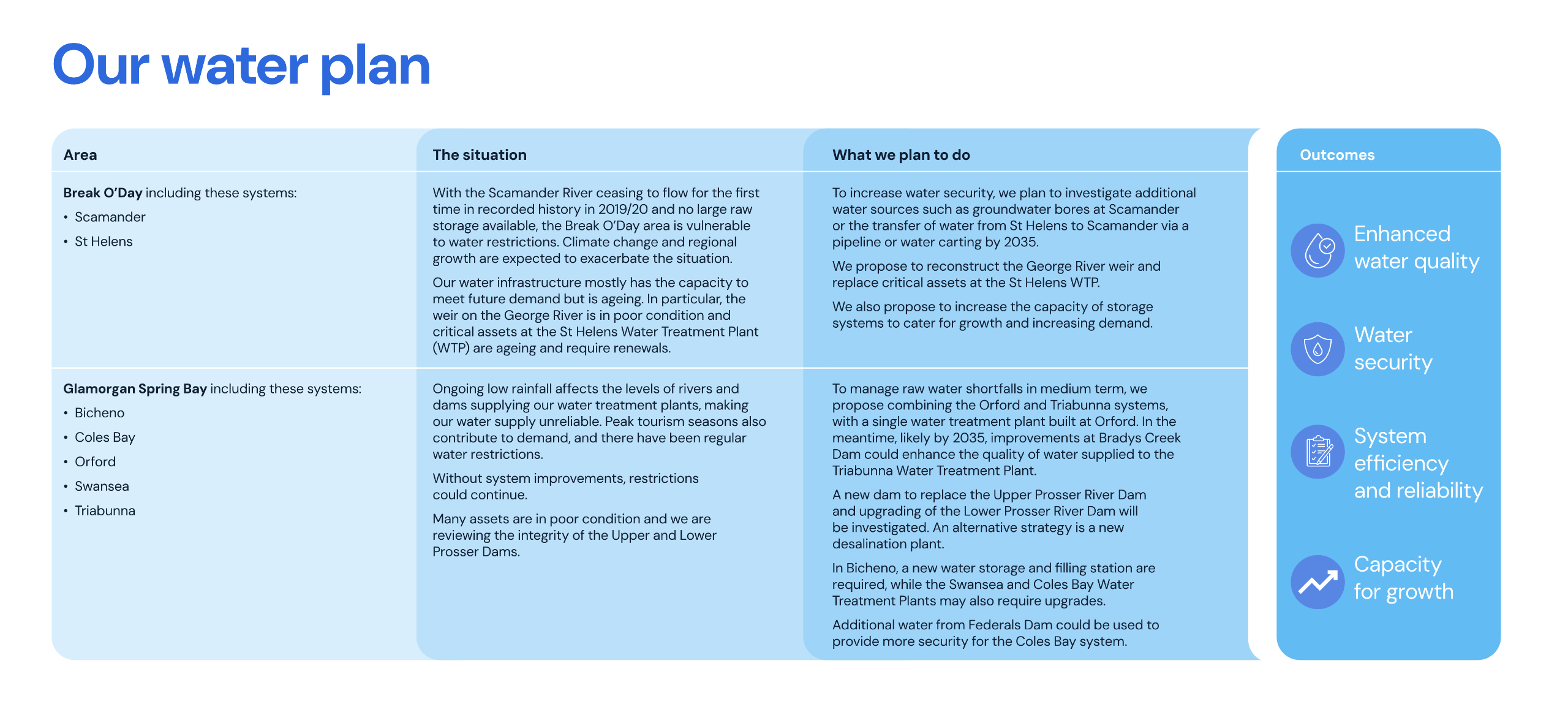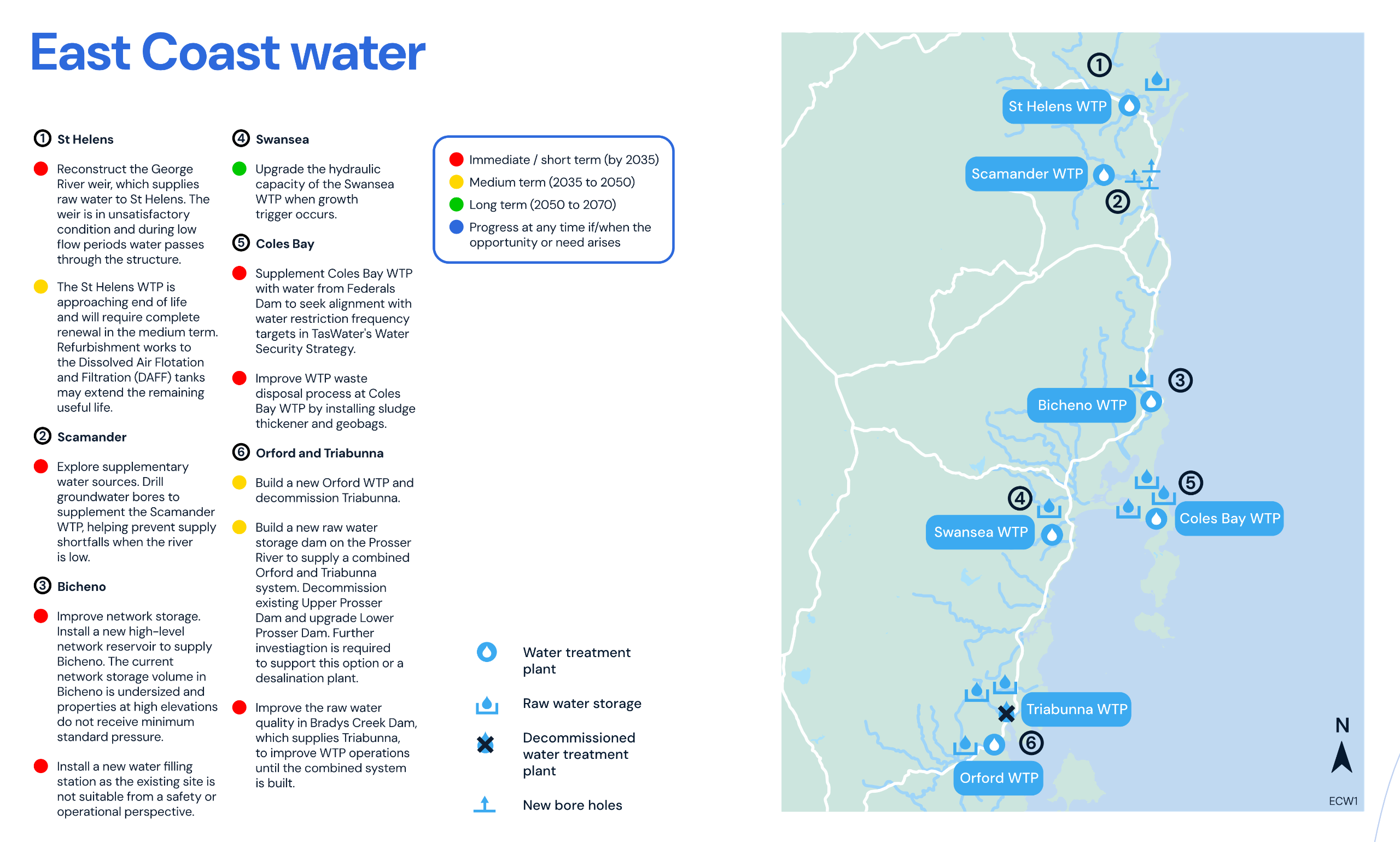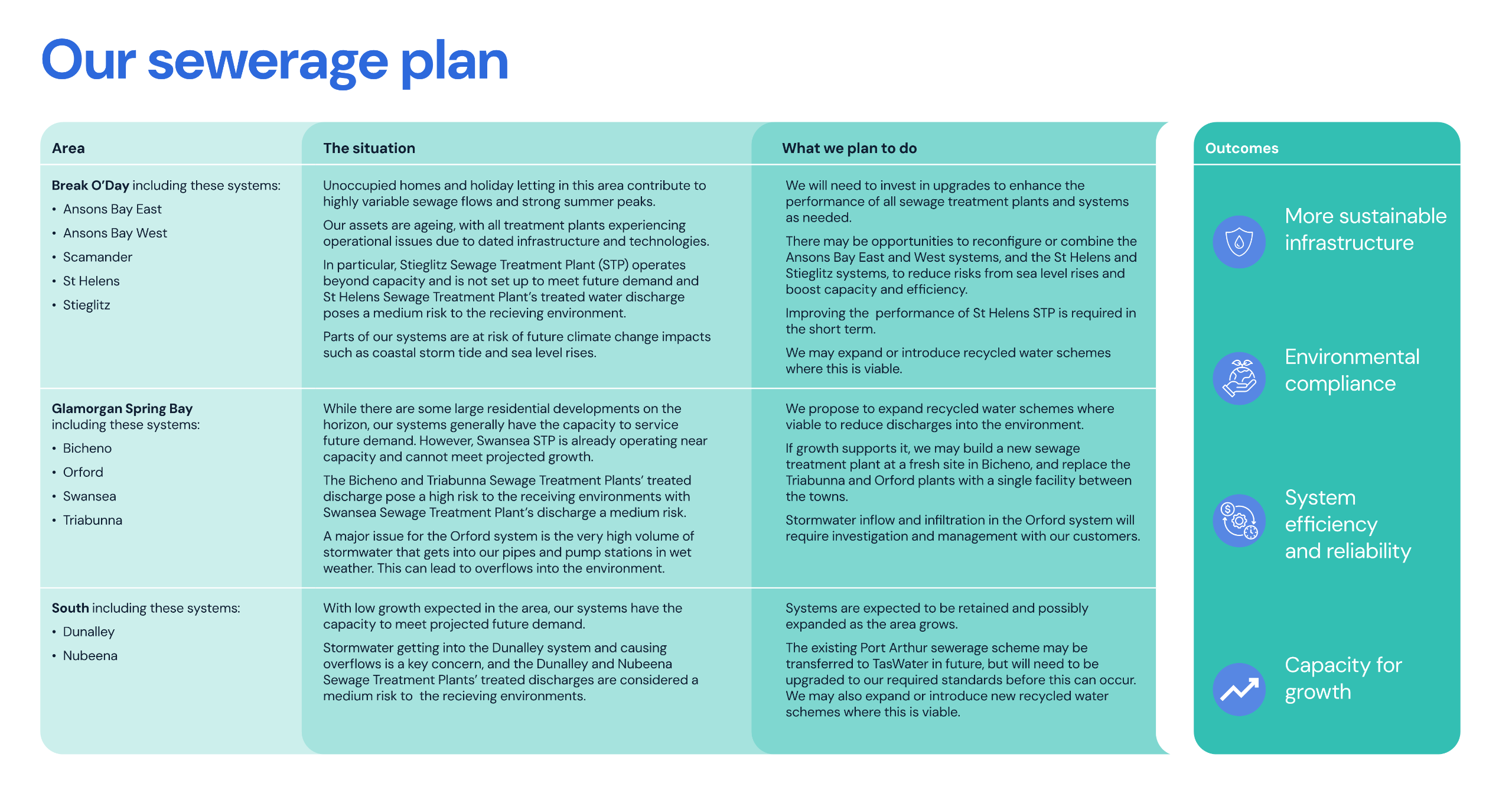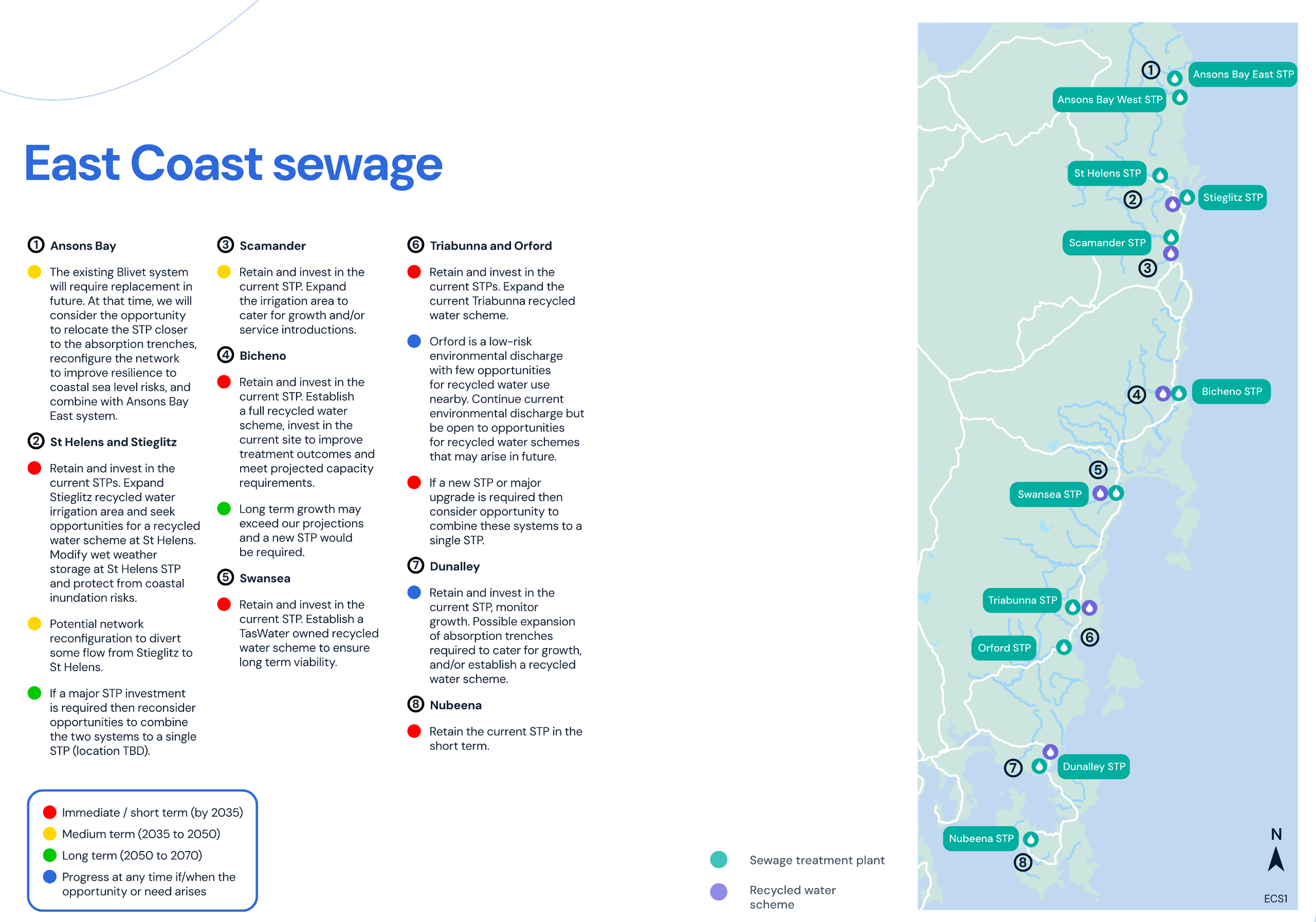Current services
The East Coast region has seven water and 11 sewerage systems as well as recycled water schemes to support the region’s residents, businesses and farms. In addition to the TasWater systems, Tasmania Parks and Wildlife Service and some Councils own and operate several small sewerage schemes.









